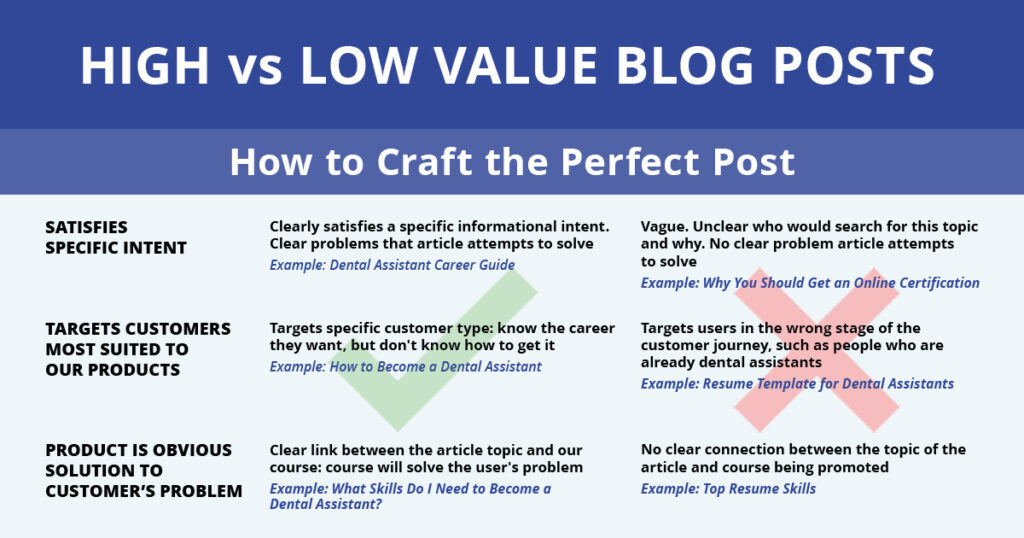Introduction
The previous newsletter discussed how to customize your XML sitemap and submit it to Google. This installment will cover how blog posts and other content marketing efforts (like newsletters and social media posts) can attract more customers to your products.
What is Content Marketing?
Content marketing is when you create content around a topic with the goal of marketing a related product. If you have a blog, social media account, or newsletter, you can use them to create content that answers questions related to your product pages.
The more you write content about your product pages, the more you become an “authority” on those topics. When you become an authority on a topic, you increase the authority of your website overall.
Moreover, internal links pass “authority” from one page to another. That is, when you link to a page from another on your own website, you are telling Google that the page being linked to is important. The more you link internally to a page, the more important it must be.
How Can Content Marketing Help Me Perform Better in Google?
Why create external content at all? Why not just answer questions related to my product on the product page itself?
The answer lies in the type of customer that blog posts attract. Course pages draw customers who know what career they want to pursue and know that taking a course is the first step towards that career. Blog posts attract customers who know what career they want to pursue but do not know how to pursue it. Instead of missing out on the latter type of customer, you can attract them using content marketing.
For example, customers searching for a “dental assistant course” have a primarily transactional intent (i.e., intent to purchase a course). Users searching for “how to become a dental assistant” have a primarily informational intent (i.e., intent to learn information). Google sees these users as having different intents and will try to serve them different content. Having a blog helps you satisfy multiple intents.
Content Marketing Topics That Work
Not all blog content will drive traffic. Here are some guidelines for creating content that works:

Use Google AdWords to see how popular a given blog topic could be. See Installment 2 of the SEO series for information on how to use Google AdWords for keyword research
For inspiration on what to include in the articles themselves, search for your article topic in Google and see what competitor articles look like. Usually, career guide articles include the job description, job outlook, and skills for the career in question. “How to become” articles are generally list articles that contain a list of steps. Career guides and “how to become” articles tend to be the most popular blog topics.
Content Marketing Best Practices
Link back to your course details pages within your content, whether that content is a newsletter, social media post, or blog post. Include a link wherever it would seem natural to do so. For a how-to article, you might include a link in one of your steps. In a career guide you might include a link in the “skills” section of the article.
Use descriptive text when linking to your course pages. For example, if you are promoting your Clinical Dental Assistant course page with an article on your blog titled “How to Become a Dental Assistant,” instead of using vague language within the text of your link, such as “click here,” use something descriptive like “dental assistant course.”
Cite your sources if you use them. Link out to them if possible.
Blog content should be between 500-2,000 words. Short content rarely ranks well. Longer content not only tends to rank higher for keywords, but it also tends to rank for more keywords.
Break your content into digestible sections instead of just one long wall of text. This action will ensure that you not only attract but retain visitors to the blog.
Be sure to include an image with any blog, newsletter, or social media post. While including images in your blog, ensure that they are less than 100KB so that they do not slow down your page. The image(s) should also be relevant to the topic(s) discussed.
For more information on content creation best practices, review installment 4 of the SEO series.
Conclusion
Now, you should understand how content marketing can be used with SEO to capture more types of users.
In the next installment, we will cover how to use Google My Business to get more people to find your business through Google.
If you have questions, please contact your account manager.
